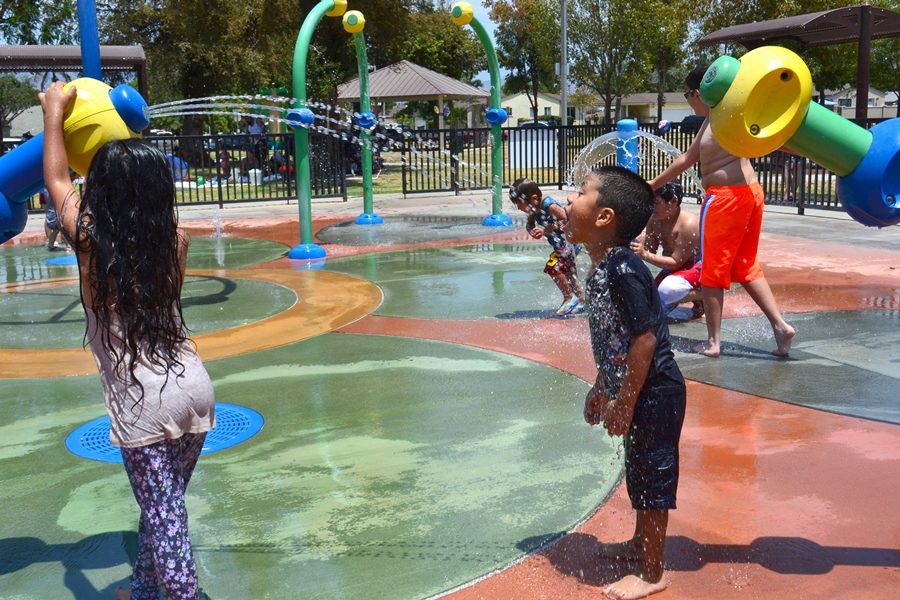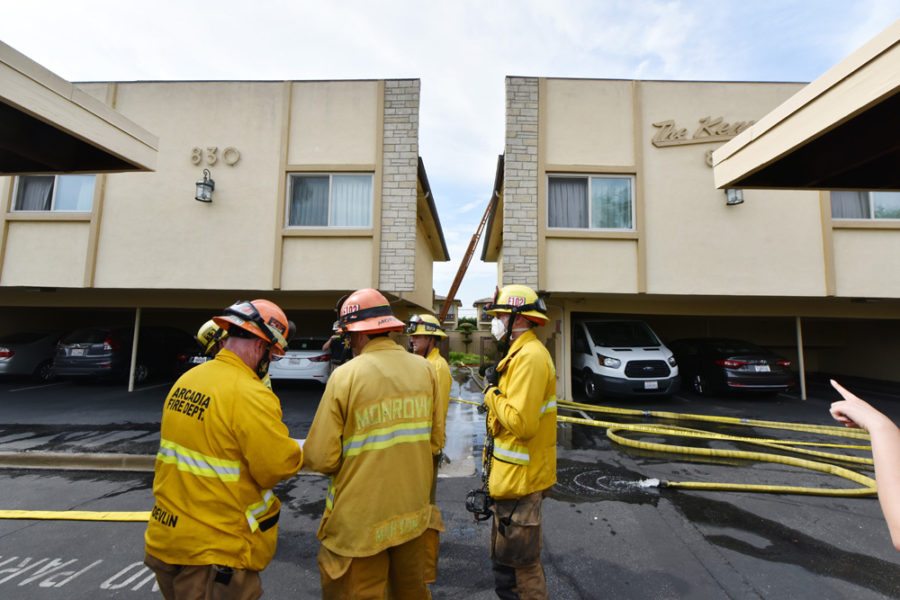
– Courtesy photo / Pasadena City Staff
By Gus Herrera
Coming this fall, the legacy of Jackie Robinson will be permanently cast in bronze, as the Pasadena hero is set to become the Rose Bowl’s first-ever commemorative statue.
Although Robinson has been depicted in numerous installations throughout the country, most recently at Dodger Stadium this past April, the Rose Bowl artwork will be especially unique.
The man best known for breaking Major League Baseball’s color barrier 70 years ago (April 15, 1947) donning his famous #42 (the only number to be retired by all MLB organizations), will be, for the first time ever, represented in his #55 Pasadena Junior College (now Pasadena City College) football uniform.
The statue, set to be the centerpiece of a redesigned rose garden in front of the stadium’s main gate, will be life-sized (approximately six feet tall) and set into a subterranean base, to give visitors the feeling of truly standing on the same ground as Pasadena’s cultural and athletic icon.
Robinson, who attended Cleveland Elementary and John Muir High School, last played on the Rose Bowl turf in 1938 – his final record-breaking season playing for Pasadena Junior College, before moving onto UCLA. Even though that may seem like a very long time ago, players who take to the Rose Bowl field today quite literally remain under his shadow, as Robinson still holds the stadium record for longest kickoff returned for a touchdown, at 104 yards.
The memorial, funded by philanthropic contributions to the Rose Bowl Legacy Foundation (Legacy), will be sculpted by renowned artist Brian Hanlon, of Hanlon Sculpture Studios.
Hanlon, who serves as the official sculptor for the Naismith Memorial Basketball Hall of fame, has created over 300 installations nationwide, according to city staff’s report.
The concept and design for the statue was developed through a highly-collaborative process, which included, “neighborhood associations adjacent to stadium, the Legacy board of directors and statue committee, the Rose Bowl Operating Company, and Legacy professional consultant Dr. Jim Erickson,” according to staff’s report.

– Courtesy photo / Hanlon Sculpture Studios
The location and orientation of the statue was ultimately determined after several site tours by the artist Hanlon, who hopes that the Rose Bowl marquee, palm trees, and San Gabriel Mountains will form a captivating backdrop.
Additionally, Dedan Brozino, executive director of Legacy, revealed that the Robinson family, Robinson’s widow Rachel, and the Jackie Robinson Foundation were consulted throughout the process and all approved the initial renderings.
“When we spoke to Rachel on the phone she was very, very excited and she felt that this was one of the most important installations that they’ve ever experienced for Jackie because of where it is … hearing those words really motivates us to do this the right way,” said Brozino.
In addition to celebrating Robinson’s legacy, the city also hopes to use the memorial as an educational tool for the 1,400 PUSD students who tour the Rose Bowl annually and beyond.
Hanlon envisions the statue as a monument for locals and visitors alike, “the goal is to educate others about the subject and inspire them to achieve greatness … an additional benefit of the artwork is that the location will become a tourist destination throughout the year … [providing] an interesting attraction regardless of scheduled events.”
Despite overwhelming support to celebrate Robinson’s legacy, the project was not immune to criticism.
Vice-Mayor John Kennedy questioned the decision to make the statue life-sized, as opposed to larger-than-life, fearing that the monument will not be able to be seen from a distance.
Brozino defended the choice as a “philosophical decision,” arguing that the intent is for visitors to be able to “truly feel the breadth of [Robinson’s] size and … power.”
“When you see it in person … you do feel the … physical strength of Jackie and we hope that permeates the emotional strength that we all believe in and have learned from over the years,” he said.
Nina Chomsky, representative for the Linda Vista-Annendale Assocation, put forth a different point of view when the project was presented to the city’s arts and culture commission, “we [oppose] statues in the central Arroyo … this is, to us … clutter and commercialization in the central Arroyo.”
Chomsky went on to suggest that it would be better to place the statue within the stadium’s gates.
Arts and Culture Commissioner Maggie Belton defended the decision to memorialize Robinson, “I’m glad to see Robinson go back to that area in a more formal way and be recognized by Pasadena … we have managed to look at the Robinsons as only from the northwest … it may not be comfortable for everyone to want Jackie at the Rose Bowl on the outside. If he was playing on the inside, we would be more comfortable.”
As part of the project, Legacy hopes to also update a memorial plaque at Robinson’s Pepper Street childhood home and add a new plaque at the home of his older brother Mack (1936 Olympic silver medalist).






